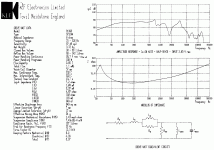Re avoiding purchase tax (the forerunner of VAT):
Individual speaker drivers of 12" and larger were exempt from purchase tax in the early 1970s. This meant you could buy a 12" driver for around the same price as a 10" driver from the same range.
Whether the B139 (11.8 x 8.3 x 3.6 inch) was exempted I'm not absolutely certain, but they might just have got away with it!
Individual speaker drivers of 12" and larger were exempt from purchase tax in the early 1970s. This meant you could buy a 12" driver for around the same price as a 10" driver from the same range.
Whether the B139 (11.8 x 8.3 x 3.6 inch) was exempted I'm not absolutely certain, but they might just have got away with it!
The Wikipedia KEF entry says something not quite the same as I remember it
"The first loudspeaker manufactured was the K1 Slimline for which the drive units used diaphragms made of polystyrene and melinex. Soon after, in 1962, came the famous B139 'racetrack' shaped woofer which allowed the design of the Celeste – one of the first truly high performance bookshelf loudspeakers. As Laurie Fincham, Cooke's successor as chief engineer, later revealed, the only reason the B139 was vertically mounted ovoid-shaped was that the British tax code at the time penalised 2 way speakers below a certain arbitrary width. Professional products were not taxed and professional was defined as above 8 inches for a woofer or as a 3 way speaker."
Anyway, the design, whichever way you look at it, was that shape for Tax reasons.
"The first loudspeaker manufactured was the K1 Slimline for which the drive units used diaphragms made of polystyrene and melinex. Soon after, in 1962, came the famous B139 'racetrack' shaped woofer which allowed the design of the Celeste – one of the first truly high performance bookshelf loudspeakers. As Laurie Fincham, Cooke's successor as chief engineer, later revealed, the only reason the B139 was vertically mounted ovoid-shaped was that the British tax code at the time penalised 2 way speakers below a certain arbitrary width. Professional products were not taxed and professional was defined as above 8 inches for a woofer or as a 3 way speaker."
Anyway, the design, whichever way you look at it, was that shape for Tax reasons.
It's handy to actually link the article as well;
https://en.wikipedia.org/wiki/KEF
That paragraph only doesn't have any references, so we just have to assume that it's actually what they have said. But from this article there is no way of knowing if that is true or a fairy tail.
It would be very interesting if people have more information.
btw, I am talking about KEF's reasons, not about the tax code.
https://en.wikipedia.org/wiki/KEF
That paragraph only doesn't have any references, so we just have to assume that it's actually what they have said. But from this article there is no way of knowing if that is true or a fairy tail.
It would be very interesting if people have more information.
btw, I am talking about KEF's reasons, not about the tax code.
Professional products were not taxed and professional was defined as above 8 inches for a woofer or as a 3 way speaker.
I believe the "above 8 inches" exemption referred to the finished loudspeaker enclosure. Naked 8" drivers purchased on their own were subject to purchase tax.
In addition, 3-way speakers were regarded as professional and not subject to purchase tax.
The addition of a super tweeter to a domestic 2-way speaker allowed it to be classed as a 3-way and hence avoid purchase tax.
It's handy to actually link the article as well;
https://en.wikipedia.org/wiki/KEF
well shucks - I assumed people had a brain and did not need to be spoon fed a link
Last edited by a moderator:
Haha, no but it's just a bit easier 👍🏻😄😁well shucks - I assumed people had a brain and did not need to be spoon fed a link
It's the raison d'etre of the B139, the sandwich construction. The idea is that because the stiffness in bending varies with the cube of the thickness, all you need is strength at the surface - provided what's in the middle isn't too bad in shear. So what you have with the B139 is aluminium foil front and rear with a polystyrene body keeping them apart. It works pretty well in practice, too, with a near ruler flat response out to 750Hz - at which point it then falls off a cliff.I'm not sure what the black anodized aluminium foil is for stuck to the surface.
It's a bigger woofer, so more Sd, meaning less excursion for the same amount of SPL.
But to be honest, I first would think of what you want to do and make.
Instead of going into the rabbit hole of just picking parts.
All these speakers are old and dated.
Nothing wrong with that, but they also perform as such.
But to be honest, I first would think of what you want to do and make.
Instead of going into the rabbit hole of just picking parts.
All these speakers are old and dated.
Nothing wrong with that, but they also perform as such.
In various commercial loudspeakers used drivers was based on the B200 series but with slightly modified coating of the cone resp. diaphragm
Several of this commercial models I have heard, e. g. the Linn Index - go to
https://www.tnt-audio.com/casse/linne.html
the Linn S.A.R.A. (compound system) - go to
https://audiocostruzioni.com/en/product/linn-isobarik-sara-speakers/
and the model DARIUS from Roksan - go to
https://www.diyaudio.com/community/...or-stands-other-brands-wanted-to-know.225588/
The common feature of all speakers was that one got excellent sonic performance down to the low frequency area, but only if the amplifier used worked well with it.
The very first choice, if it is not possible to retrofit a subwoofer.
Several of this commercial models I have heard, e. g. the Linn Index - go to
https://www.tnt-audio.com/casse/linne.html
the Linn S.A.R.A. (compound system) - go to
https://audiocostruzioni.com/en/product/linn-isobarik-sara-speakers/
and the model DARIUS from Roksan - go to
https://www.diyaudio.com/community/...or-stands-other-brands-wanted-to-know.225588/
The common feature of all speakers was that one got excellent sonic performance down to the low frequency area, but only if the amplifier used worked well with it.
The very first choice, if it is not possible to retrofit a subwoofer.
Attachments
-
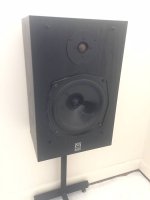 00s0s_8lEKj1jtw2x_0jK0qk_1200x900.jpg23.2 KB · Views: 61
00s0s_8lEKj1jtw2x_0jK0qk_1200x900.jpg23.2 KB · Views: 61 -
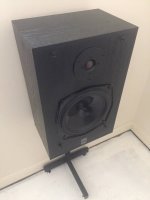 00D0D_9qSynKgJicU_0jK0qk_1200x900.jpg30.4 KB · Views: 59
00D0D_9qSynKgJicU_0jK0qk_1200x900.jpg30.4 KB · Views: 59 -
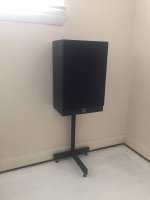 00o0o_gMQjNiphr9O_0jK0qk_1200x900.jpg20.4 KB · Views: 56
00o0o_gMQjNiphr9O_0jK0qk_1200x900.jpg20.4 KB · Views: 56 -
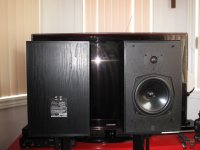 1007928-921dd9a4-linn-index-speakers.jpg90.8 KB · Views: 70
1007928-921dd9a4-linn-index-speakers.jpg90.8 KB · Views: 70 -
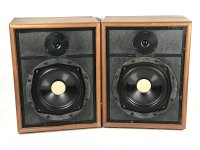 i1iyan5rbi5jx0kgoqpt.jpg62.7 KB · Views: 62
i1iyan5rbi5jx0kgoqpt.jpg62.7 KB · Views: 62 -
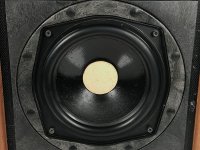 tdzzo9scoslppwnuau15.jpg71.8 KB · Views: 65
tdzzo9scoslppwnuau15.jpg71.8 KB · Views: 65
...near ruler flat response out to 750Hz - at which point it then falls off a cliff.
With a substantial resonance at about 1kHz.
dave
Would the B139 sound better than the B200 below 750Hz?
Never really done a direct comparison. The one ref i have is my preference for the IMF TLS50 (w B200) over TLS80 (with B139). XO was lower than 750Hz.
dave
It's about 2.5dB at 750Hz or so and then tumbles by at least 8 dB between there and 800 and something. Pretty good if you think that's going to be about an octave into the stopband so about 18dB down at that point. That should make for quite a smooth handover to whatever is above it.With a substantial resonance at about 1kHz.
dave
Attachments
I don't think I'd take the B139 out to 750Hz. It's a bit messy thereafter. All these drivers are pretty much theoretical when we talk about frequencies up to 350Hz or so. There can be some contribution from the spider mechanical impedance (and, amusingly, from really weak baskets as I have just found out with an otherwise very nice 75mm midrange dome) but mostly the theory is better than the manufacturer's measurements - yes, there is at least one (good) manufacturer out there whose sub 500Hz measurements are worse than useless.Would the B139 sound better than the B200 below 750Hz?
Opinions?
Using the B139 will allow you greater max output but with a B200 (any B200, frankly, as they were nearly all used outside the ideal T/S region) you can also take it up to an old-fashioned 1kHz crossover. The B200 has a rising response from there upwards but it's not badly behaved and we know it has been used up to 3.2kHz. You can also get 50% more Sd than a B139 with two B200s (in fact the area of a genuine 12" driver). Then you have the alternative or redoing a 104 which is a supremely relaxing loudspeaker, if a bit bit too pipe and slippers for some but it would be fun to live with for a while.
I can't say I'd be that keen changing over to a 3" full range but it does remove one or two hurdles and some complexity. My reservations would be that all the distortion generated in the motor comes straight out, without any attenuation and you don't get the chance to reduce the tweeter level because of a waveguide loading. It might sound wonderful - God knows, Minimaxes did, with their 4" tweeter - but you have just slightly reduced your chances of making actual hi fi.
It's about 2.5dB at 750Hz or so and then tumbles by at least 8 dB between there and 800 and something. \
Her is another, seems there is some variability above that 750 Hz peak.
dave
take the B139 out to 750Hz.
The TLS80 XO was 400 Hz, i figured that was too high. 200-225 looks like it would be at teh BS(-3).
dave
There's an object lesson in picking the scale of your x-axis! 😛 That looks nothing like as good, though the data obviously isn't hugely different. It looks as though the aluminium pings off in different places depending on coating or glue. Wolfgang Klippel says it's a problem of having a flat diaphragm but I have some doubts about that and have been meaning to try out some different sandwich materials on the B139 to see if that abrupt cliff can be turned into a rolling field.
On a related B200 note...
In an attempt to turn back time, I repurchased the loudspeakers of my youth -- a pair of KEF C65s -- on FB Marketplace. Unfortunately, when I took them home I discovered both woofers don't work. (Fortunately I got my money back.)
I only hear output from the tweeters. I removed the woofer from the box and tried driving it directly - no sound. I also tried measuring with a multimeter. No reading. So, even though the drivers look perfectly fine to my eye, I guess they are inoperable.
(Incidentally, my original pair eventually failed in the same way many, many years ago, after a friend played them too loud at a party.)
The speakers use B200 drivers, part number SP1259. I've been having trouble finding replacements online. Any suggestions? Could I use a different model of B200 driver? I see someone nearby has a pair of C40s - maybe those would work? Or any other suggestions to further test / refurbish my non-working drivers?
I've attached information from KEF about these and other speakers in the range. Any ideas much appreciated!
In an attempt to turn back time, I repurchased the loudspeakers of my youth -- a pair of KEF C65s -- on FB Marketplace. Unfortunately, when I took them home I discovered both woofers don't work. (Fortunately I got my money back.)
I only hear output from the tweeters. I removed the woofer from the box and tried driving it directly - no sound. I also tried measuring with a multimeter. No reading. So, even though the drivers look perfectly fine to my eye, I guess they are inoperable.
(Incidentally, my original pair eventually failed in the same way many, many years ago, after a friend played them too loud at a party.)
The speakers use B200 drivers, part number SP1259. I've been having trouble finding replacements online. Any suggestions? Could I use a different model of B200 driver? I see someone nearby has a pair of C40s - maybe those would work? Or any other suggestions to further test / refurbish my non-working drivers?
I've attached information from KEF about these and other speakers in the range. Any ideas much appreciated!
Attachments
I remember these speakers well, and remember a KEF rep bringing a pair of the 8" version (C45?) to my house because they were the first speakers to showcase Andrew's idea of using a large series cap on the bass unit. They were still a bit too KEF for my taste but the bass idea worked well, if not quite doing the full job. No, the series cap doesn't colour the sound at all (I'd say introducing it changes things less than changing any other capacitor in the bass section) but, funnily enough, neither did it protect the speakers I'd put it on when the A370 went DC. (It might protect a larger speaker. A 3" driver getting 65V DC as its signal was already a shot to the head, long before the coil had a chance to begin burning.)
Sadly, yours is completely different B200 and, I believe is a 4 Ohm unit so you can't swap a B200 in. Just in case your drivers can be rescued, have a look to see if the joint between the VC wire and the braid is good. Sometimes you can repair a unit by unwinding a turn, or half a turn, and resoldering it to the braid (which, incidentally, is never that easy). But if not, it's either eBay for the same drivers or getting the bass units repaired, which is what I would do. Volt, who I think moved to Dorset some while ago, would be a good set of people to do it - especially as you will probably have to have the coils wound anew. Send them both drivers and you'll get back something pretty damn close to the originals and, most importantly, properly aligned.
Sadly, yours is completely different B200 and, I believe is a 4 Ohm unit so you can't swap a B200 in. Just in case your drivers can be rescued, have a look to see if the joint between the VC wire and the braid is good. Sometimes you can repair a unit by unwinding a turn, or half a turn, and resoldering it to the braid (which, incidentally, is never that easy). But if not, it's either eBay for the same drivers or getting the bass units repaired, which is what I would do. Volt, who I think moved to Dorset some while ago, would be a good set of people to do it - especially as you will probably have to have the coils wound anew. Send them both drivers and you'll get back something pretty damn close to the originals and, most importantly, properly aligned.
Two things to bear in mind, one is that copper to aluminum joints will get galvanic corrosion, moisture levels in the atmosphere have something to do with that.
Second is that it could be a problem with lead free solder, Scan Speak drivers have been known to fail that way, braid to coil joint is the normal point of failure.
Unless you are very good, get it done outside, if you feel they are worth it.
Or buy no name Chinese or Indian speakers, they tend to be quite good, at least some of them.
Second is that it could be a problem with lead free solder, Scan Speak drivers have been known to fail that way, braid to coil joint is the normal point of failure.
Unless you are very good, get it done outside, if you feel they are worth it.
Or buy no name Chinese or Indian speakers, they tend to be quite good, at least some of them.
- Home
- Loudspeakers
- Multi-Way
- How good was the KEF B200?
